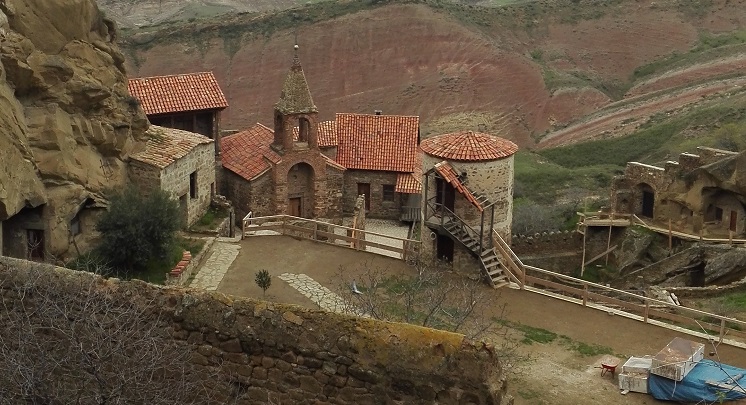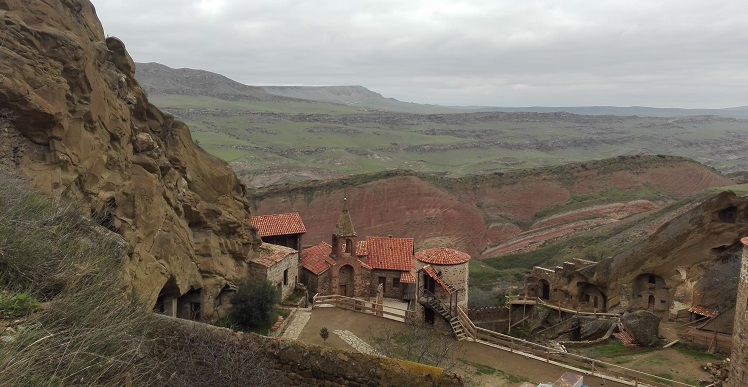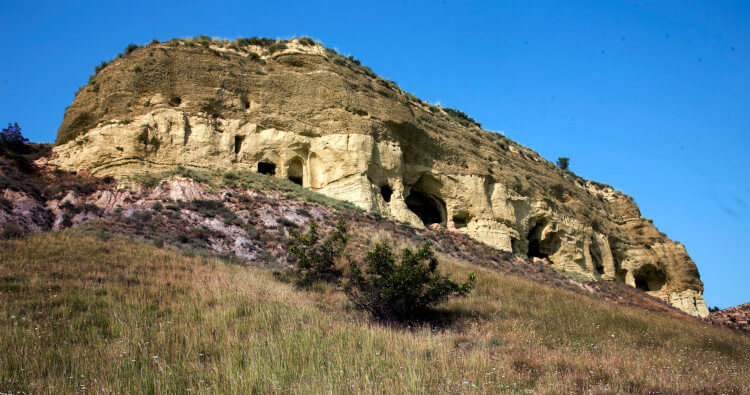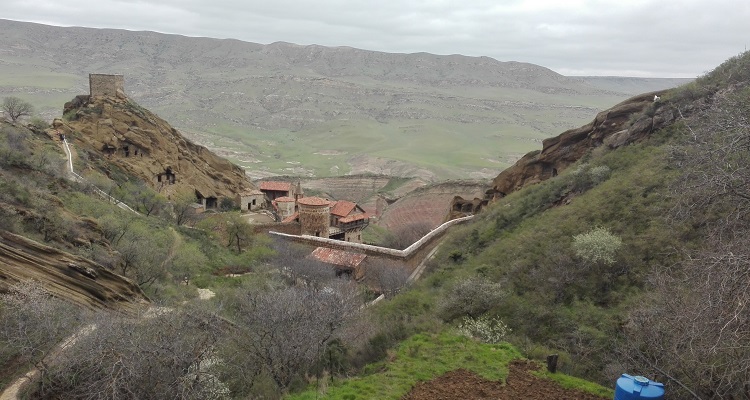Azerbaijani border guards allow public into David Gareji monastery – problem temporarily solved

Georgian Foreign Minister David Zalkaliani says that the Georgian government has reacted immediately to settle the David Gareji problem in a timely manner. Photo: Agenda.ge.
Azerbaijani border guards have now allowed clerics and visitors to enter the medieval Georgian monastery David Gareji, Georgian Foreign Minister David Zalkaliani said.
Clerics of the monastery complex located at the Georgia-Azerbaijan border told the media earlier today that Azerbaijani border guards did not allow them into the Udabno Monastery of the complex and also prevented visitors and pilgrims from entering the oldest sections of the monastery complex.
 Georgian President Salome Zurabishvili visited David Gareji and spoke with border guards on April 20, saying that the border with Azerbaijani should be demarcated in a timely manner. Photo: President's press office.
Georgian President Salome Zurabishvili visited David Gareji and spoke with border guards on April 20, saying that the border with Azerbaijani should be demarcated in a timely manner. Photo: President's press office.
They said that the problems regarding the entry started two days ago, shortly after the Georgian President Salome Ziurabishvili’s visit at the historic site.
The Azerbaijani government has made the decision to open the closed points. We have immediately reacted to the issue. I have spoken with my Azerbaijani colleague and Georgian Interior Minister has contacted his colleague in the country. The problem has been settled for now,” Zalkaliani said.
 David Gareji is the 6th century monastery complex. Photo: Agenda.ge.
David Gareji is the 6th century monastery complex. Photo: Agenda.ge.
The president’s administration stated that it is important that the commission working on the demarcation of the Georgia-Azerbaijan border renew work on the issue.
The demarcation of the border will remove such artificial tension,” head of the president’s administration Lasha Zhvania said at a special briefing earlier today.
Georgia has demarcated the border only with Turkey after the collapse of the Soviet Union. The borders with Azerbaijan and Armenia need to be agreed upon still.
David Gareji is a complex of 22 rock-hewn monasteries and more than 5,000 sanctuaries and cave-cells, located in Georgia’s south-east.
 Tweet
Tweet  Share
Share










